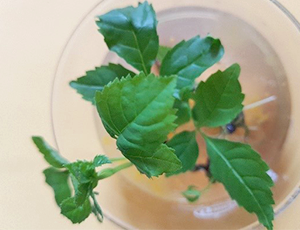search innovation

New immunodiagnostic test for detecting mastitis in dairy cows
offer number: P557
Cow mastitis is a significant veterinary problem, causing millions of dollars in financial losses to cattle farmers. It is estimated that it is diagnosed in up to 20 per cent of cows. In turn, the economic losses generated by mastitis can be as high as US$ 76 000 per month for each farm. These are caused primarily by a reduction in the quantity of milk obtained, a deterioration in its quality, but can also result from the need to isolate sick animals for the duration of treatment, which involves a lack of milk production. The most common pathogens causing mastitis include bacteria such as Staphylococcus aureus, Streptococcus
uberis, Streptococcus agalactiae, Streptococcus dysgalactiae, Corynebacterium bovis, Mycoplasma bovis, Escherichia coli, Klebsiella pneumoniae, but also fungi and algae.
Currently, mastitis diagnosis is mainly based on rapid tests to estimate the somatic cell count (SCC) in a sample of tested cow’s
milk. This method allows a rapid diagnosis and, most importantly, can be performed directly on the animal. This is one of the most important advantages due to the field-based nature of veterinarians’ work. Nevertheless, a key limitation of this method is the inability to identify the etiological agent. The lack of knowledge of the pathogen causing the infection, in turn, prevents the introduction of targeted antibiotic therapy, and this may have an impact on the increase in the proportion of multidrug-resistant bacterial strains, which is a growing problem worldwide. On the other hand, commonly used methods to identify the etiological agent, i.e. culture, molecular, serological or spectrometric methods (e.g. MALDI-ToF), are more time-consuming, require specialized equipment and qualified personnel, and often the results obtained are difficult to interpret unambiguously. Furthermore, they cannot be carried out outside the laboratory, which significantly limits their usefulness in the diagnosis of bovine diseases.
The new invention of the Jagiellonian University Medical College, Medical University of Lodz and University of Lodz, which is the subject of this offer, is part of the trend of searching for new diagnostic tests that can be performed directly on the animal. Its subject is a new multiplex immunodiagnostic test that easily and quickly detects mastitis in cows.
The offered test is distinguished by the following advantages:
the simultaneous identification of four bacterial species, i.e. Staphylococcus aureus, Streptococcus agalactiae, Streptococcus uberis and Escherichia coli, which are among the most frequently isolated species causing mastitis;
the short time to perform and wait for the result, which does not exceed 20 minutes;
high sensitivity and specificity (>75%);
easy to perform in the field, directly on the animal and by a person not trained in diagnostics/veterinary medicine (e.g. breeder);
a cassette-based form, based on the lateral flow assay (LFA) method, (Fig. 1).

Figure 1: Scheme showing a multiplex immunochromatographic test for the simultaneous identification of Staphylococcus aureus (SA), Escherichia coli (EC), Streptococcus agalactiae (GBS) and Streptococcus uberis (SU). Legend: A – positive test for each test species, B – positive test for Streptococcus uberis, C – stamen confirming correct test performance.
The offered invention is subject of a patent application. Further research and development of the invention are continued at the Faculty of Medicine of the Jagiellonian University Medical College, Medical University of Lodz and University of Lodz. Currently, the Centre for Technology Transfer CITTRU is looking for entities interested in commercial application of the invention.
uberis, Streptococcus agalactiae, Streptococcus dysgalactiae, Corynebacterium bovis, Mycoplasma bovis, Escherichia coli, Klebsiella pneumoniae, but also fungi and algae.
Currently, mastitis diagnosis is mainly based on rapid tests to estimate the somatic cell count (SCC) in a sample of tested cow’s
milk. This method allows a rapid diagnosis and, most importantly, can be performed directly on the animal. This is one of the most important advantages due to the field-based nature of veterinarians’ work. Nevertheless, a key limitation of this method is the inability to identify the etiological agent. The lack of knowledge of the pathogen causing the infection, in turn, prevents the introduction of targeted antibiotic therapy, and this may have an impact on the increase in the proportion of multidrug-resistant bacterial strains, which is a growing problem worldwide. On the other hand, commonly used methods to identify the etiological agent, i.e. culture, molecular, serological or spectrometric methods (e.g. MALDI-ToF), are more time-consuming, require specialized equipment and qualified personnel, and often the results obtained are difficult to interpret unambiguously. Furthermore, they cannot be carried out outside the laboratory, which significantly limits their usefulness in the diagnosis of bovine diseases.
The new invention of the Jagiellonian University Medical College, Medical University of Lodz and University of Lodz, which is the subject of this offer, is part of the trend of searching for new diagnostic tests that can be performed directly on the animal. Its subject is a new multiplex immunodiagnostic test that easily and quickly detects mastitis in cows.
The offered test is distinguished by the following advantages:
the simultaneous identification of four bacterial species, i.e. Staphylococcus aureus, Streptococcus agalactiae, Streptococcus uberis and Escherichia coli, which are among the most frequently isolated species causing mastitis;
the short time to perform and wait for the result, which does not exceed 20 minutes;
high sensitivity and specificity (>75%);
easy to perform in the field, directly on the animal and by a person not trained in diagnostics/veterinary medicine (e.g. breeder);
a cassette-based form, based on the lateral flow assay (LFA) method, (Fig. 1).

Figure 1: Scheme showing a multiplex immunochromatographic test for the simultaneous identification of Staphylococcus aureus (SA), Escherichia coli (EC), Streptococcus agalactiae (GBS) and Streptococcus uberis (SU). Legend: A – positive test for each test species, B – positive test for Streptococcus uberis, C – stamen confirming correct test performance.
The offered invention is subject of a patent application. Further research and development of the invention are continued at the Faculty of Medicine of the Jagiellonian University Medical College, Medical University of Lodz and University of Lodz. Currently, the Centre for Technology Transfer CITTRU is looking for entities interested in commercial application of the invention.
field of science:
forms of protection:
technological maturity:
property rights:
variants of cooperation:
information / broker of Jagiellonian University

name and surname: Klaudia Polakowska, PhD
phone number: +48 519 329 129
email: klaudia.polakowska@uj.edu.pl


























